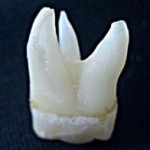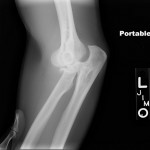 RSS FEED
RSS FEED
Posts Tagged ‘pain management’
Hitting Myself Upside my Head
April 8th, 2012
 Well, not literally. Not that it would be unheard of in the Migraine world, many of us have banged our heads at times when the beast has settled down upon us. It’s a kind of counter-irritant, I guess. Something, anything, to try to break the repetitive throbbing. Or a distraction, some surface pain to focus on instead of the hideous rending inside the head. I’m really glad I don’t have many Migraines that get that bad any more.
Well, not literally. Not that it would be unheard of in the Migraine world, many of us have banged our heads at times when the beast has settled down upon us. It’s a kind of counter-irritant, I guess. Something, anything, to try to break the repetitive throbbing. Or a distraction, some surface pain to focus on instead of the hideous rending inside the head. I’m really glad I don’t have many Migraines that get that bad any more.
Last Monday I woke up after a rough night, sleepy and with a mild ache on the left side of my forehead. Technically I’m sure it was a Migraine already, but I thought of it, as I often do, as more of a maybe-migraine, a migraine wannabe. My first impulse (so often the right one) was to call in to work, take my sumatriptan and go back to bed. And then the thought entered my mind of the budget for the month, and of the sick leave hours I try to budget too, and how since my Migraines have become less frequent I sometimes have a little headache that doesn’t turn into a full-blown Migraine. So my little headache and I went off to work, and chose to focus on the less mentally taxing of the tasks on my desk, and did most of my thinking out loud to help me focus, and took a walk at lunch, and did all I could to keep the beast at bay.
But I was talking about head-banging. Which I wanted to do before the night was out. I got home and tried to focus on all the stuff I try to focus on after work, like visiting my on-line world, Migraine related and otherwise, and helping Adam manage his homework, and imposing some kind of order on the chaos that is my home, and trying to build up and work on some of my free-lance work, and I found all I could do was go take a sumatriptan and lie down.
I set the alarm for about an hour and a half, rolled a pillow under my aching neck and dosed off, hoping the pill would do its job. And woke up groggy when the alarm went off, groggy and in pain. Groggy and nauseous and hungry and in pain. It was not yet two hours from the time I took the triptan, so I couldn’t do another dose, and the pill had had no noticeable effect. So I had to wait 15 minutes or so, and I needed to eat something for my blood sugar which was dropping (contributing to the Migraine). The head had started throbbing, one of those times when I imagined I could specifically feel each dilated vein around my brain pulsing and stretching and shoving against my skull.
So did I hit myself upside the head? In a sense. I didn’t actually feel like head-banging this time, though it was the worst Migraine I’ve had for a few months. Probably about an 8 out of 10 this time, the kind that makes me cry. I knew I had to bring out the big guns this time. I had to give myself a sumatriptan injection. A highly effective way to abort the Migraine, but which I put off and avoid as long as I possibly can. Why on earth would that be, you ask? If you have to ask you have never had one of these injections, or you are lucky enough not to experience them the way I do. First of all the injection itself hurts. It’s a spring-loaded injector; you shove it hard against your arm and hold it there, pressing until it injects. It’s not a jab, it’s a SLAM-STAB, and you have to keep pushing that thing in for 30 seconds to make sure all the medicine goes in, I do it while breathing hard through my gritted teeth.
Then you need to take your sore and aching arm and get yourself prone as quickly and smoothly as you can, so you can be lying down as st ill as can be when the real head slam comes. For me, and I understand for many others, the injection causes a “surge” of increased head pain before it begins to work. So the only thing, sometimes, that will make the pain go away, is a short-term, extreme increase in the pain. When I say short-term, it’s not an agonizing 30 seconds like the injection torture. It’s a good five to ten minutes of the front of my head feeling like it’s being hit with a tire iron, from the inside.
ill as can be when the real head slam comes. For me, and I understand for many others, the injection causes a “surge” of increased head pain before it begins to work. So the only thing, sometimes, that will make the pain go away, is a short-term, extreme increase in the pain. When I say short-term, it’s not an agonizing 30 seconds like the injection torture. It’s a good five to ten minutes of the front of my head feeling like it’s being hit with a tire iron, from the inside.
The only thing that gets me through to the other side is lying on my back as still as I can, doing my relaxation breathing. I have to go into the pain, be with the pain, and visualize my breath carrying the pain away, out with each exhale. And eventually I fall asleep, and usually in that sleep the pain goes away.
This time it took a long time, almost until morning, before the pain lifted. If I’d followed my original impulse and taken a pill in the morning before the pain was much of anything, I probably wouldn’t have needed the injection. If I’d taken the injection right away when I got home I probably would have been pain free in two hours. But I couldn’t bring myself to hit myself upside the head. Until there was no alternative. If you’ve been there, you know what I mean.
– Megan Oltman
Tags: Adam Oltman Porcher, Adam Porcher, Migraine pain, pain management, sumatriptan, triptans
Posted in Communicating, Managing | Comments (2)
How much Pain?
December 2nd, 2009
My daughter had her wisdom teeth out yesterday. Once the anesthesia wore off she started feeling pretty  serious pain. She took her first Lorcet and called me on the intercom about half an hour later, sounding panicked – she needed more pain meds, right now! We got her some ibuprofen, but tried to explain that the meds take a while to take effect, and to give it a chance. Today she is in bed with a swollen face, pain and nausea, quite miserable. We’re bringing the ice packs, the medications, the mushy food, and trying to comfort her the best we can.
serious pain. She took her first Lorcet and called me on the intercom about half an hour later, sounding panicked – she needed more pain meds, right now! We got her some ibuprofen, but tried to explain that the meds take a while to take effect, and to give it a chance. Today she is in bed with a swollen face, pain and nausea, quite miserable. We’re bringing the ice packs, the medications, the mushy food, and trying to comfort her the best we can.
I’ve been thinking about the nature of pain. At nineteen, my daughter has never had surgery before, never had a broken bone or other serious injury, and the only serious illness she has had was the chicken pox at age four. Her pain today is real and I can’t be the judge of how much pain she has. Her pain may be worse because unfamiliar. When I was her age, I had had: Migraines for at least six years, a broken arm, stitches on my face, major abdominal surgery, the mumps, the chicken pox, scarlet fever, the measles… Pain and I were old acquaintances (I won’t say friends). I have written before about how you never get used to pain. Pain is, in some ways, continuously and horribly new every time, every moment. But at the same time, pain can become familiar, and for that reason, perhaps less frightening.
 The most severe pain I can remember was when I broke and dislocated an elbow. I went into shock, I believe from the pain. Both my labors were quite painful, as I had an unproductive pattern of contractions, which came two or three in a row without pause, and each set didn’t do as much work as one normal contraction. Childbirth pains are different, I think, because any pain you experience is for something, something big and very important, and you know there is an end in sight. At twenty-nine I fell and herniated a disk and lived for years with nagging, stinging pain in my low back and right leg. I have also had Migraines where the pain was so intense I felt moment by moment as if I could not stand one moment more, where all I could do was rock myself and sob, to quote a Migraine buddy of mine. I also had my wisdom teeth out at twenty-two and I don’t remember how that pain compared, but I do remember two miserable and very drugged up days.
The most severe pain I can remember was when I broke and dislocated an elbow. I went into shock, I believe from the pain. Both my labors were quite painful, as I had an unproductive pattern of contractions, which came two or three in a row without pause, and each set didn’t do as much work as one normal contraction. Childbirth pains are different, I think, because any pain you experience is for something, something big and very important, and you know there is an end in sight. At twenty-nine I fell and herniated a disk and lived for years with nagging, stinging pain in my low back and right leg. I have also had Migraines where the pain was so intense I felt moment by moment as if I could not stand one moment more, where all I could do was rock myself and sob, to quote a Migraine buddy of mine. I also had my wisdom teeth out at twenty-two and I don’t remember how that pain compared, but I do remember two miserable and very drugged up days.
I have learned, though, that something changes when pain is familiar, when it is not mysterious. Yes, frequent severe pain is debilitating, exhausting, dis-enheartening beyond belief. But at the same time, with familiarity it can lose some of its power over us.
What do I mean by that? This is difficult to talk about. Pain is real, but at the same time our experience of it is subjective. It’s not “all in our heads” in the sense of being imagined. It is not produced by neurosis or by being weak or hysterical. But at the same time, we can change and effect our experience of pain. When my Migraines became very frequent, I learned a practice of deliberate relaxation, based in yoga, biofeedback and guided imagery. A part of the practice is to look at pain head on – to be very aware of the experience of pain. Not to fight it or try to pull away from it, but to meet it, recognize it, describe it and observe it. In that process we get some detachment from it. Sometimes we can reduce it significantly, or make it disappear. Even if that doesn’t happen, we can make it much easier to bear.
I teach these relaxation techniques to Migraineurs and others with chronic illnesses because I believe we can truly make a difference for ourselves when we learn to focus inward. I believe we should fight for better treatment, strive and work to understand and manage our own systems, but when faced with pain we must practice a kind of acceptance. I’m not talking about being a doormat or giving up. I am talking about looking the pain in the eye – saying yes, there it is, it feels like this, it is this much better or worse than any other pain, it is located here, it behaves like this. Observing it, allowing it to be and allowing it to fade.
I’m not saying this is easy. Don’t ever let anyone tell you you should “just” learn to live with it. There is no “just” about it – it’s hard and takes continual work. I use relaxation zealously in the tough times and then I slack off, and have to pick it back up and get back in practice when the next challenge comes along. Overall I have developed an awareness of my system and its ups and downs. I have less pain in my life, and the pain has less effect on me, than before I began these techniques.
There may be some kind of threshold level beyond which the rules change, or become distorted. I haven’t experienced really frequent or chronic severe pain. Six years ago my Migraine pattern suddenly increased, from a monthly menstrual Migraine plus one or two big ones a year, to three or four major Migraines a week. That was the closest I have come to experiencing truly chronic pain. And three or four times a week I felt something like the panic I heard in my daughter’s voice yesterday. Nowadays pain doesn’t panic me. I may get cranky and resentful, but sooner rather than later i say to myself, Okay here it is again. Be with what’s so, and do what I can to help it ease or pass.
I am learning a new kind of pain as I adjust to fibromyalgia. My body has become a pain amplifier, and a small pain can grow outward with ripples over a day or more until I hurt everywhere. I am having a flare-up today. I ache from head to toe. I am grateful that despite the allover aches, I don’t feel the constant severe pain I hear of from some with fibro. I am practicing what Migraines have taught me, to pace myself, to push only gently, to be with the pain, not to fight it, to know that this too shall pass.
I’m hoping for a better tomorrow, for me, for you, for my daughter. In the meantime, I will be with what’s so. My arms ache and I’m going to rest now.
– Megan
Wisdom tooth image courtesy of Steve Montgomery; broken elbow image courtesy of H Dragon.
Tags: fibromyalgia, Migraines, pain, pain levels, pain management, relaxation techniques, wisdom tooth extraction
Posted in Managing, Musings | Comments (3)
Migraine Poetry
May 7th, 2008
 By now, I hope you’ve had a chance to read some of the wonderful poetry at the 2008 Putting Our Heads Together Migraine and Headache Poetry Contest. Congratulations again to all the winners. There were an enormous number of excellent entries – I don’t envy the judges!
By now, I hope you’ve had a chance to read some of the wonderful poetry at the 2008 Putting Our Heads Together Migraine and Headache Poetry Contest. Congratulations again to all the winners. There were an enormous number of excellent entries – I don’t envy the judges!
My own entry was way down the list. With your indulgence, I reprint it here.
Never Get Used to It
We never got used to the drunk next door
who broke bottles on the stoop past midnight, cussed all
night,
staggered into us as we left the apartment.
He was a feature of the landscape we were glad to leave
when we moved away.
Along with the upstairs landlords
whose children jumped off the couch above my head, all day,
while I napped with my newborn,
who thought 3 a.m. was a good time to install carpeting, KaChunk
KaChunk all night,
who coated the back yard in weed killer, fumes rolling into
our ground floor apartment – they were a feature of the landscape we never got
used to.
So we moved away.
We never got used to the dirty old busybody next door with
his nasty comments.
We never pulled up the blinds or trimmed the hedge on his
side of the house.
We just moved away. Again.
You’d think you’d get used to the pain – it’s a bore. There’s no excitement in pain.
Just the startled moment when it comes again, crashing like
the bottles on the stoop.
Just the deadly hours of enduring, KaChunk, KaChunk,
don’t pull up the blinds and let it look in.
Never get used to the scraping, boring, searing,
pounding.
Pain management?
I thought pain could recede, a feature of the landscape to
ignore, like the cracks in the pavement.
I never thought this was a landscape I could not move away
from.
No moving van. No
packing boxes.
No new home without the pain.
Open your boxes and find the drunken, staggering,
inconsiderate,
dirty old busybody pain.
No ear plugs. No gas
masks. No prisoners taken. No quarter given.
Never get used to it.
Megan Oltman
Broken Bottles image courtesy of Vertigogen Window Blinds image courtesy of Matt Callahan Packing Box image courtesy of Tim Herrick
Tags: migraine, pain, pain management, poetry
Posted in Communicating, Weblogs | Comments (4)
That disclaimer thing...
Remember: nothing we do here is medical advice or treatment or is a substitute for medical advice or treatment. Get competent medical advice to learn more about your migraines, possible treatments and risks.
What's New on Migraine Support Group Coaching |
Recent Comments
- on Calling all Redheaded Migraineurs
- on No, You’re not Crazy, You just Have Migraines
- on No, You’re not Crazy, You just Have Migraines
